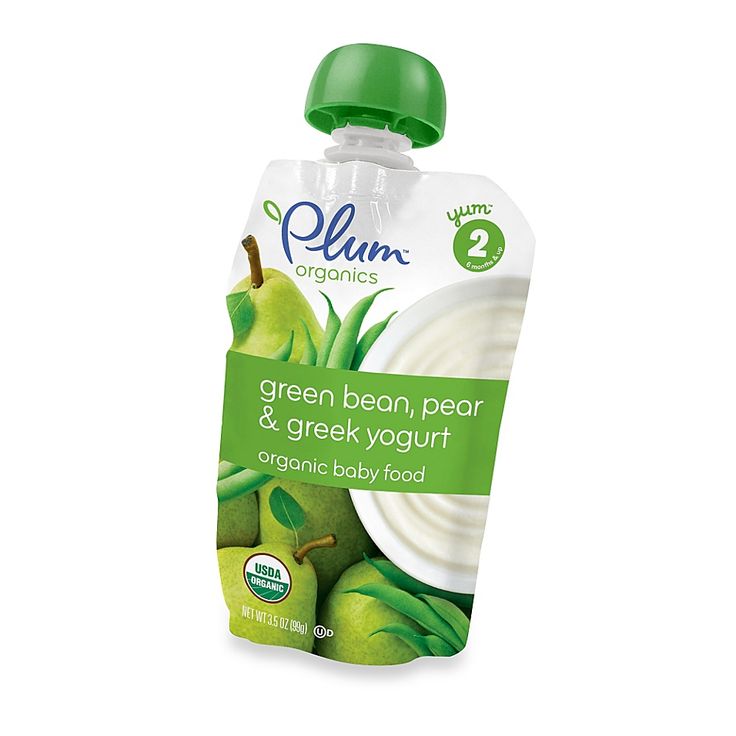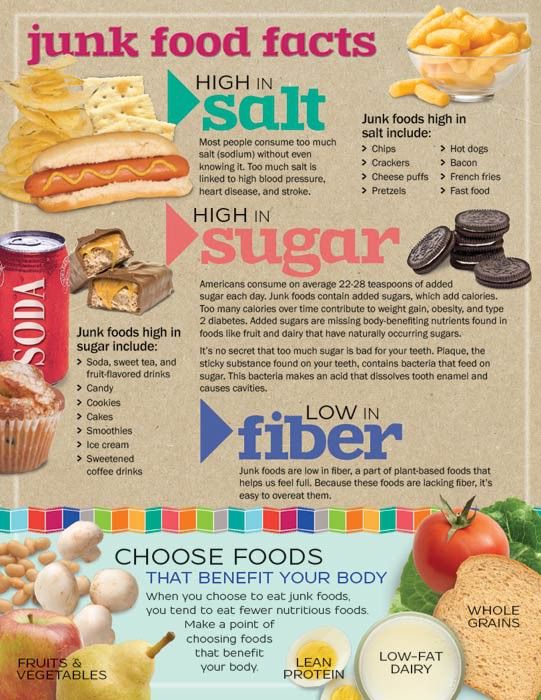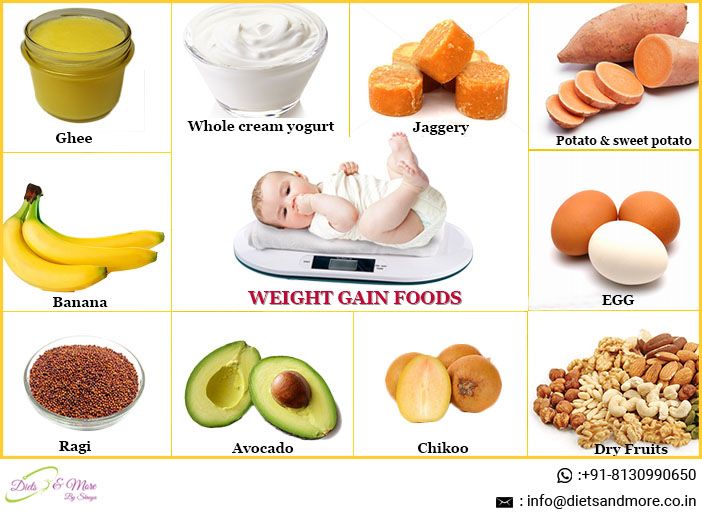Feeding baby tofu
How to Prepare Tofu for Babies & Teach Them to Eat It
Tofu is an excellent first food for babies starting to eat. It is a nutrient-dense, protein-rich food and it contains many nutrients that are vital to a baby’s growth.
Ready to introduce your baby to tofu? We have all the information you need! Keep reading to learn why tofu is a great addition to your baby’s diet.
In this article, we will cover:
What tofu is made from
Why tofu is good for babies
Where to find tofu
How to prevent choking on tofu
How to prepare tofu for baby
How to make tofu puree
How to prepare tofu for baby-led weaning?
Allergy information regarding tofu
How to get my baby to like tofu
What is tofu?
Tofu is made in a process similar to cheese-making, by coagulating soy milk and pressing the curds into solid white blocks varying in degrees of texture from extra firm to silken soft.
The flavor is very mild, so it is very flexible as an ingredient, adapting to the flavors that it is surrounded by.
Why is tofu good for babies?
Tofu is full of nutrients that support a growing baby’s health. Among other things, tofu is considered a complete protein, which means it contains all 9 essential amino acids the body needs to form protein.
The benefits of tofu for babies
Tofu is rich in:
- Protein
- Iron
- Selenium
- Copper
- Manganese
- Phosphorus
- Zinc
Depending on the coagulants used during the curdling process, it can also include calcium or magnesium.
The other nutrients like selenium, copper, manganese, phosphorus, zinc, calcium and magnesium are vital to thyroid, brain, immune and bone health.
Note: Iron is an essential part of hemoglobin that transfers oxygen to tissues. Considering babies start to deplete their iron stores by 4-6 months of age, it’s important to offer iron-rich foods like tofu.
More benefits of serving tofu to babies
Tofu is also a budget-friendly baby food, so it’s a great, low-cost way to serve up so many important nutrients to your child.
Where to find tofu
Tofu is typically found in the refrigerated produce section of the supermarket. If not there, then it may be found in the dairy section instead.
Not all tofu needs to be refrigerated. Some tofu, like silken tofu, can be vacuum sealed and packaged so that it is shelf-stable.
Is tofu a choking hazard for babies?
Tofu is a low-risk choking food–even firm tofu is low risk. However, as always, it is important to create a safe eating environment by sitting your baby in a high chair with a footrest or another safe place. You should also try avoiding distractions or disruptions when your baby is eating.
Gagging and choking on tofu
Eating is a new skill for babies learning to eat solids. While eating tofu, your baby could gag as they are learning to manage the food. Gagging is the body’s natural protective response to prevent choking.
The symptoms of gagging include:
- Coughing
- Gurgling
- Spitting
- Audible gagging noises
If gagging does occur, let your child work through their protective gag while you remain calm.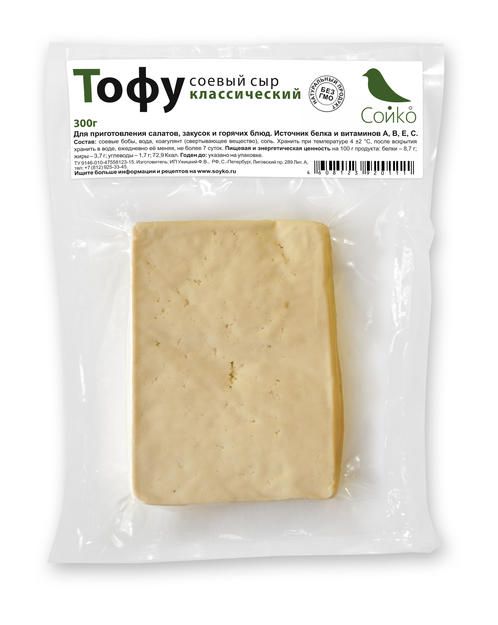 Once it’s cleared, they can continue eating and engaging with the tofu.
Once it’s cleared, they can continue eating and engaging with the tofu.
Choking, on the other hand, is when an object blocks their trachea. Choking can be life-threatening and requires immediate intervention.
The symptoms of choking include:
- Silent/quiet struggling
- Inability to cough
- Inability to or difficulty breathing.
If available to you, we recommend taking an infant CPR class.
Related: Common Choking Hazards + How to Prevent Choking in Babies
How to safely serve tofu to babies
Silken tofu can be served straight out of its package for your baby to try. It can also be added to soups or smoothies as it will easily blend in and adopt the flavors of the other ingredients.
To prepare firm tofu for your baby, you can first press the tofu to drain the water from it. Wrap the tofu in a towel or paper towel and place a heavy pot or skillet on top for 20 minutes to allow the water to drain. Pressing the tofu helps keep the texture firm when cooking.
Marinate the tofu however you like, and then try baking, grilling, stir-frying or even air-frying before serving.
How to puree tofu for baby
If you’re interested in serving your baby tofu puree, here’s how to make it.
- Choose silken or soft tofu as they will be easiest to blend into a puree, and they can be taken out of the package and used as is, with no need to cook, as long as they are pasteurized.
- Blend the silken or soft tofu in a blender or food processor, and then offer it to your baby on a pre-loaded spoon.
You could also just serve a spoonful of the silken tofu as is, considering it is already a smooth texture. Try mixing tofu with other purees like banana or sweet potato puree to add more nutrients to the mixture.
How to prepare tofu for baby-led weaning
If you’re doing baby-led weaning or serving your baby finger foods, follow this method to prepare the tofu for your baby.
- Choose firm or extra firm tofu for baby led weaning, as soft or silken tofu will not be grabbable by hand.

- While not necessary, pressing the tofu first will help to remove a lot of the moisture and help to retain a firmer, chewier texture. (See above to learn how to press tofu.)
- Cut the tofu into thick, finger-length strips about the width of 2 fingers.
- Bake, pan-fry or even air-fry the tofu strips.
Once your baby has their pincer grasp, serve the tofu in cubes and let them practice grabbing the pieces with their thumb and index finger.
Feel free to use any herbs or spices to flavor the tofu, since it does not have much flavor on its own.
Related: 10 Pincer Grasp Activities for Babies
Is tofu considered an allergen?
Yes, tofu is made from soybeans, and soy is one of the major 9 allergens that cause the majority of reactions.
Often, prepared foods with tofu are mixed with other major allergens like egg, sesame, peanut and wheat, so it may be wise to first introduce tofu as is at home.
Soy allergy is more common in babies and young children, but it tends to get outgrown as they get older; 25% of children will outgrow their allergy by age 4 and 69% by age 10.
Soybeans and peanuts are both part of the legume family. While it is rare for someone with a peanut allergy to react to soy, someone with a soy allergy can be more sensitive or allergic to peanuts. One study notes that up to 88% of those with soy allergies can be sensitive to peanuts or have a peanut allergy.
Tofu and FPIES
Furthermore, soy is one of the more common triggers for FPIES, or food protein-induced enterocolitis syndrome, which is different from a food allergy. A FPIES diagnosis is based on symptoms and responses to elimination diets and oral food challenges.
Symptoms for FPIES typically present themselves within 1 to 4 hours after consumption, and the main symptom tends to be profuse, repetitive vomiting with or without diarrhea. FPIES is a rare food allergy that most often affects infants or young children. Most children will grow out of it by age 3 or 4.
How can you tell if a baby is having an allergic reaction to tofu?
Allergic reactions to soy are typically mild, but it’s important to keep watch.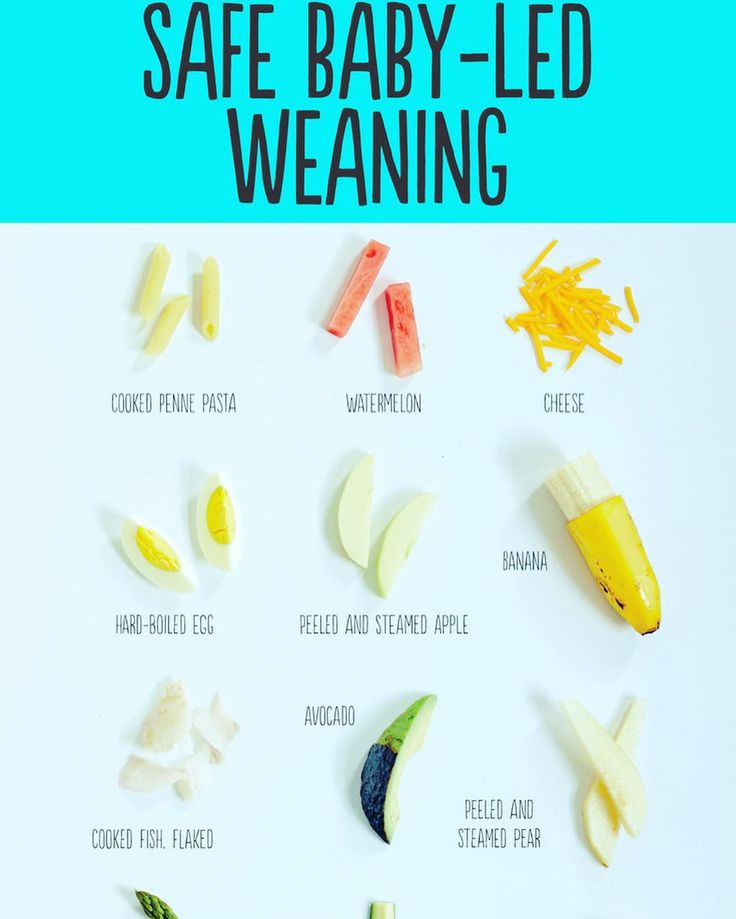
Common allergen symptoms can include hives, itching, swelling of the lip or tongue, and rashes.
If signs of wheezing, throat tightness, significant swelling of the lip or tongue, difficulty swallowing or trouble breathing are observed, call 911 immediately.
Related: When Should You Introduce Food Allergens to Your Baby?
How to help your baby learn to like tofu
Picky eating can start to show up in infancy. As the parent, there are things you can do to help your child learn to like tofu, prevent picky eating and help support your baby’s development. Here are two activities to try.
1. Model eating tofu to get your baby to eat it
Let your baby join you at the table while you eat to help lay the foundation for eating. This is a good time to expose them to foods common in your home and build positive associations.
If your baby shows interest in your food, offer them a small sample. Use simple, clear language:
- “I’m eating tofu today.
 ”
” - “Tofu for dinner!”
- “Sweet and nutty tofu.”
2. Let your baby explore the tofu through food play
Try this “Pinching Tofu” food activity with your baby to help them learn about tofu.
To do the activity, offer your baby tiny pieces of tofu in a small plastic cup, bowl or snack cup with a flexible lid. Allow them time to explore, bring the pieces of tofu to their mouth, pass them back and forth, and push them around.
Encourage your baby to dump and fill the cup as they are able. Invite them to pick up the pieces using a fist grasp or a two-finger pinch. This will help them further develop their pincer grasp.
- “Dump the tofu!”
- “Put the tofu in the cup.”
- “Get those tofu!”
Related: Food Play Every Day: 102 Food Activities for Kids
Additional baby nutrition info & tips for starting solids
- When to Introduce Cups to Babies
- Can the Division of Responsibility Help Me Feed My Baby?
- What Parents Need to Know About Toxins in Baby Food
- How to Create Your Child’s Feeding Schedule
- Vitamin D for Babies: How Much They Need & More
References
Lally, J. R., & Mangione, P. L. (2017). Caring Relationships: The Heart of Early Brain Development. Young Children, 72(2). https://www.naeyc.org/resources/pubs/yc/may2017/caring-relationships-heart-early-brain-development
R., & Mangione, P. L. (2017). Caring Relationships: The Heart of Early Brain Development. Young Children, 72(2). https://www.naeyc.org/resources/pubs/yc/may2017/caring-relationships-heart-early-brain-development
Cichero, J. A. (2016). Introducing solid foods using baby-led weaning vs. Spoon-feeding: A focus on oral development, nutrient intake and quality of research to bring balance to the debate. Nutrition Bulletin, 41(1), 72–77. https://doi.org/10.1111/nbu.12191
Akhlaghi M, Ghasemi Nasab M, Riasatian M, Sadeghi F. Soy isoflavones prevent bone resorption and loss, a systematic review and meta-analysis of randomized controlled trials. Crit Rev Food Sci Nutr. 2020;60(14):2327-2341. doi: 10.1080/10408398.2019.1635078. Epub 2019 Jul 10. PMID: 31290343.
Food Allergy Research and Education. Soy Allergy. Retrieved October 8, 2022.
https://www.foodallergy.org/living-food-allergies/food-allergy-essentials/common-allergens/soy
Ramdath DD, Padhi EM, Sarfaraz S, Renwick S, Duncan AM. Beyond the Cholesterol-Lowering Effect of Soy Protein: A Review of the Effects of Dietary Soy and Its Constituents on Risk Factors for Cardiovascular Disease. Nutrients. 2017 Mar 24;9(4):324. doi: 10.3390/nu9040324. PMID: 28338639; PMCID: PMC5409663.
Beyond the Cholesterol-Lowering Effect of Soy Protein: A Review of the Effects of Dietary Soy and Its Constituents on Risk Factors for Cardiovascular Disease. Nutrients. 2017 Mar 24;9(4):324. doi: 10.3390/nu9040324. PMID: 28338639; PMCID: PMC5409663.
Savage JH et al. The natural history of soy allergy. J Allergy Clin Immunol. 2010 Mar; 125:683-86. https://pubmed.ncbi.nlm.nih.gov/20226303/.
Wang Q, Liu X, Ren S. Tofu intake is inversely associated with risk of breast cancer: A meta-analysis of observational studies. PLoS One. 2020 Jan 7;15(1):e0226745. doi: 10.1371/journal.pone.0226745. PMID: 31910211; PMCID: PMC6946133.
The Ultimate Guide to Tofu for Babies
Jump to Recipe
Introduce tofu to your baby with confidence with these cooking tips and recipes! Whether you are doing purees, baby led weaning, or both, tofu is an amazing first food.
When Can Babies Eat Tofu?
Tofu can be offered to babies as soon as they’re ready to start solids, usually around 6 months. It’s important to remember that your baby is unique and that rather than going by the calendar, you need to make sure your baby is DEVELOPMENTALLY ready to start solids.
It’s important to remember that your baby is unique and that rather than going by the calendar, you need to make sure your baby is DEVELOPMENTALLY ready to start solids.
If you’re unsure, be sure to grab my FREE handout!
Is Tofu Safe for Babies?
Tofu is not a choking hazard as long as it's soft enough to be easily smushed between your thumb and forefinger and is served in an age-appropriate way.
Tofu is made from soybeans, which is one of the top allergens. If you were told to wait until around 2-3 years of age to introduce it, this is outdated advice!
The current recommendation is to introduce highly allergenic foods EARLY and OFTEN. By doing so, you can dramatically reduce the risk or actually help prevent the development of food allergies.
When first introducing, start with a small amount and gradually increase.
Health Benefits
Packed with so many essential nutrients, tofu is an excellent source of plant-based protein and calcium. It also contains omega-3 fatty acids, which play a key role in brain development, as well as many essential micronutrients, like iron, zinc, and magnesium.
It also contains omega-3 fatty acids, which play a key role in brain development, as well as many essential micronutrients, like iron, zinc, and magnesium.
Soybeans are one of the few plant-based protein foods and the only legume that contains ALL nine essential amino acids. Quinoa is another source.
Do be sure to serve tofu alongside a vitamin C rich food to greatly enhance the absorption of iorn.
Related: Best Iron-Rich Foods for Babies and Toddlers
What About the Phytoestrogens?
You may have heard that consuming soy foods can cause feminization in boys and breast cancer.
Yes, tofu contains isoflavones, phytoestrogens that are similar in structure to the hormone estrogens. However, they are NOT the same and behave differently in the body.
In fact, there isn’t research to support that soy has a negative impact on testosterone. But there is evidence showing that phytoestrogens do NOT affect testosterone and estrogen levels.
In addition, there is evidence that girls who eat soy at a young age may have a lower risk of breast cancer later in life.
Types of Tofu - which one is best?
Tofu (100g) | Silken | Soft | Firm | Sprouted |
Protein (g) | 4.76 | 7.17 | 9.04 | 13.2 |
Iron (mg) | .95 | 1.11 | 1.61 | 1.7 |
Calcium (mg) | 83 | 111 | 201 | 239 |
Tofu is made from soybeans, water, and bean curd.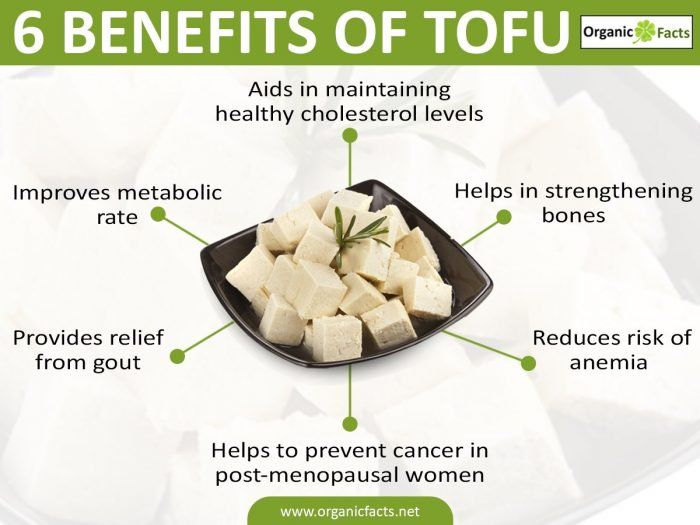 Similar to the cheese-making process, it's made by curdling fresh soy milk, pressing it into a block, and then cooling it.
Similar to the cheese-making process, it's made by curdling fresh soy milk, pressing it into a block, and then cooling it.
All types of tofu are great! You will notice differences in the key nutrients, but again, I encourage you to serve a variety. Do look for calcium sulfate in the ingredients.
It comes down to how you want to serve it.
Silken and soft tofu are wonderful for purees and adding creaminess to sauces, dips (tofu mayo), smoothies, baked goods, puddings, etc. They can also be used as an egg replacer, if your baby is allergic!
Firm and extra-firm tofu are great for slicing into strips or bite-sized pieces as a finger food.
Sprouted tofu is the same as extra-firm tofu but made with sprouted soybeans. If you find that your baby doesn't tolerate tofu, this variety may help as the process of sprouting helps aid in digestion.
How to Prep Tofu
Tofu contains a lot of water so it’s best to press out as much as possible if intending to serve as a finger food. Here's what to do:
Here's what to do:
- Wrap the tofu block in 2-3 or more layers of paper towel, a clean dishcloth, or a kitchen towel.
- Place a baking sheet on top with a few canned goods or a heavy skillet (if using extra firm) to help weigh it down.
- Set aside for at least 20 minutes.
If adding to sauces, dips, smoothies, etc. then there's no need to press. Simply drain, wrap tofu in a kitchen towel, and gently press over the sink.
Top Cooking Methods
First, you want to cut the tofu into strips that are about 2 inches in length (size of your pinky finger) and about ½ to ¾ inch in width.
Here's how I like to cut a block of tofu:
Its subtly sweet, nutty, and neutral flavor profile makes it the perfect blank canvas, taking on whatever flavor it's cooked with.
Most of the recipes you find on the internet promise crispy tofu because we, the adults, love this texture. However, we want the tofu to be soft (easily smushable between thumb and forefinger) for babies, and that's what I promise ;).
Here are several ways to achieve this so that it's safe and enjoyable for your little one.
Baked
Remember - bigger is safer for babies who are just starting solids. You can always chop into smaller pieces after it's cooked to serve to older babies and kids.
In a small bowl, whisk together oil and seasoning(s) of choice. Place tofu on a baking sheet. Brush oil mixture onto each piece of tofu to prevent breaking. If using extra-firm tofu, you can toss with oil and seasonings.
You can totally use several different flavorings as you see pictured (oregano, curry powder, cumin) to incorporate variety throughout the week.
Place on baking sheet and bake at 375°F for 20-25 minutes, flipping halfway through. To ensure evenly cooked tofu, don't skip this step.
Pan Fried
Heat 1-2 tablespoons of oil over medium high heat. Arrange your prepared tofu in a single layer on the pan and cook for 2-3 minutes, or until lightly browned on the bottom. Flip and cook for an additional 2-3 minutes. Work in batches if necessary.
Flip and cook for an additional 2-3 minutes. Work in batches if necessary.
Pictured: cooked in sesame oil and seasoned with garlic powder.
Scrambled
The texture of this tofu scramble is soft and moist, making it perfect for babies. You can simply serve as is, mix in with oatmeal, or mash on top of a toasted bread.
How to Serve Tofu to Babies (Baby Led Weaning)
6+ Months Old
You can:
- puree
- mash and preload onto a spoon or mix into other foods (e.g. oatmeal, quinoa baby cereal, lentils, mashed avocado, hummus, etc.)
- serve as a big strip
Pictured above are the exact meals I served to my baby during her first month of starting solids. I actually filmed EVERYTHING I made for her as well as my toddler, husband, and me from Day 1 to Day 84 (so 3 months) in real time and turned it into an easy to access and follow program!
Do you want to minimize picky eating and set a solid foundation for a lifetime of healthy eating habits?
Check out this 3 month mastering self-feeding program! It’s the closest thing to me being in your kitchen
Find out more!
9+ Months Old
As your baby develops their pincer grasp and is able to pick up small pieces of food using their thumb and finger, you can cut into small, bite-sized pieces.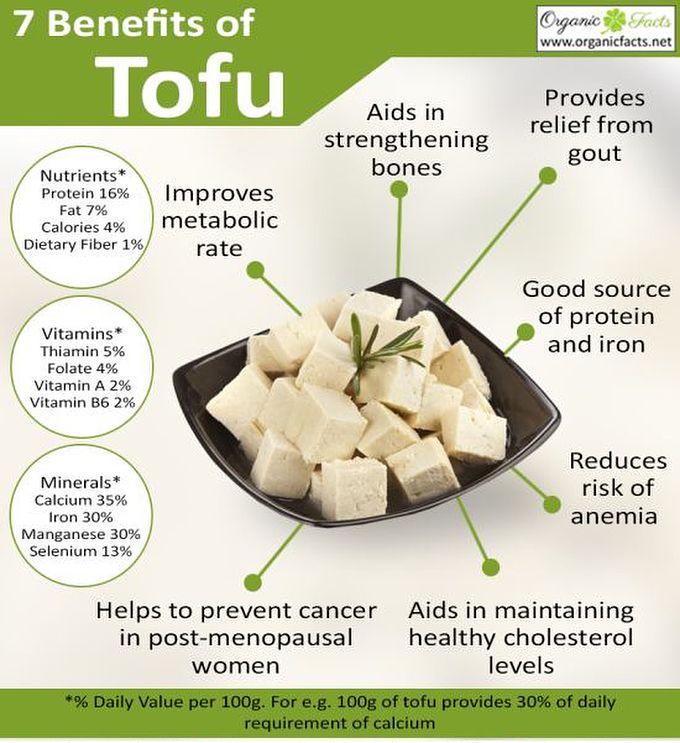 I still suggest continuing to offer larger pieces so they can practice taking bites.
I still suggest continuing to offer larger pieces so they can practice taking bites.
I also encourage you to offer mixed foods early and often during this "window of opportunity" when babies are most willing to try and accept new foods.
If your child has never had foods touching or mixed together, it will be much harder to get them to eat these as they enter toddlerhood.
Related: Is my Toddler Turning into a Picky Eater?
Frequently Asked Questions
Organic vs. conventional tofu, which one is better?
I recommend purchasing organic, if possible, as it guarantees there's no genetically modified organisms (GMOs).
What is the best way to store?
If you don't use all of the tofu, submerge in cold water in an airtight container and refrigerate for up to 1 week. Be sure to replace the water each day. Toss it out if it starts to smell funny.
Once cooked, store in an airtight container and refrigerate for up to 3 days.
Can I freeze cooked tofu?
I wouldn't for babies. Freezing will result in a chewier texture which we don't want.
Is raw tofu safe for babies?
Yes! tofu that you find at the store actually has already been cooked. As long as it’s been pasteurized, it is safe. Having said that, if you want to err on the side of caution then you can certainly heat up the sauce and bring to room temperature before serving to your baby.
Tofu Recipes for Babies
- Non-Spicy Korean Tofu Soup
- Tofu Mayo
- Creamy Sweet Potato Sauce
- Easy Baked Shrimp Cakes
Did you make this recipe? Leave a rating below and let me know how you liked the recipe! Your feedback means so much to me!
How to Cook Tofu for Baby Led Weaning
Introduce tofu to your baby with confidence with these cooking tips and recipes! Whether you are doing purees, baby led weaning, or both, tofu is an amazing first food.
5 from 4 votes
Print PinPrep Time: 5 minutes
Cook Time: 25 minutes
Total Time: 30 minutes
Servings: 12 (2 strips)
Author: Min | MJ and Hungryman
- ▢
Sheet Pan
- ▢
Baking Mat
- ▢ 14 ounces firm or extra firm tofu
- ▢ oil (e.g. olive, avocado, sesame)
- ▢ seasonings (e.g. curry powder, turmeric, cumin, oregano, garlic powder)
First press the tofu. Wrap the tofu block in 2-3 or more layers of paper towel, a clean dishcloth, or a kitchen towel. Place a baking sheet on top with a few canned goods or a heavy skillet (if using extra firm) to help weigh it down. Set aside for at least 20 minutes.
Baked
Preheat oven to 375° Fahrenheit. Line a baking sheet with parchment paper or baking mat and set aside.
Cut into strips that are about 2 inches in length (size of your pinky finger) and about ½ to ¾ inches in width.

Toss tofu with oil and seasoning(s) of choice.
Place on baking sheet and bake for 20-25 minutes, flipping halfway through. To ensure evenly cooked tofu, don't skip this step.
Pan-Fried
Heat 1-2 tablespoons of oil over medium high heat. Arrange prepared tofu in a single layer on the pan and cook for 5-6 minutes, or until lightly browned on the bottom. Flip and cook for an additional 5-6 minutes. Work in batches, if necessary.
If you don't use all of the tofu, submerge in cold water in an airtight container and refrigerate for up to 1 week. Be sure to replace the water each day. Toss it out if it starts to smell funny.
Once cooked, store in an airtight container and refrigerate for up to 3 days.
I don't recommend freezing.
Calories: 28kcal | Carbohydrates: 1g | Protein: 3g | Fat: 1g
Course lunch, dinner
Cuisine American
Tried this Recipe? Tag me Today!Tag me @KidFriendly. Meals today!
Meals today!
Toddlers | Vegetarian.ru
-
Discounts to vegetarians
-
Our newspaper
-
NEWS
Repost
If the children of vegetarians receive a sufficient amount , and their diet contains quality sources of energy, nutrients and nutrients such as iron, vitamin B12 and vitamin D, growth during this period of development of the child will be normal.
Extreme manifestations of a vegetarian diet, such as fruitarianism and a raw food diet, according to studies, negatively affect the development and growth of the child, and, accordingly, cannot be recommended for children of early (infant) and middle age.
Many vegetarian women choose to breastfeed their babies and this practice should be fully supported and implemented everywhere. Vegetarian women's breast milk is identical in composition to non-vegetarian women's milk and is absolutely adequate in terms of nutritional value. Commercial formulas for infants can be used in cases where the child for various reasons is not breastfeeding, or he was weaned before the age of 1 year. For vegan children who are not breastfed, the only option is a soy-based diet.
Vegetarian women's breast milk is identical in composition to non-vegetarian women's milk and is absolutely adequate in terms of nutritional value. Commercial formulas for infants can be used in cases where the child for various reasons is not breastfeeding, or he was weaned before the age of 1 year. For vegan children who are not breastfed, the only option is a soy-based diet.
Soy milk, rice milk, homemade formulas, cow's milk, goat's milk should not be used as breast milk substitutes or special commercial formulas during the first year of a child's life because these products do not contain any macro- or micro-nutrients and valuable substances in full necessary for the adequate development of the child at such an early age.
The rules for gradually introducing solid foods into your child's diet are the same for both vegetarians and non-vegetarians. When it comes time to introduce a high-protein diet, vegetarian children can have tofu gruel or puree, legumes (puree and strain if needed), soy or milk yogurt, boiled egg yolks, and cottage cheese. In the future, you can start giving pieces of tofu, cheese, soy cheese. Packaged cow's milk, or soy milk, full fat, fortified with vitamins can be used as a first drink from the first year of life for a child with the correct growth and development parameters and consuming a variety of foods.
In the future, you can start giving pieces of tofu, cheese, soy cheese. Packaged cow's milk, or soy milk, full fat, fortified with vitamins can be used as a first drink from the first year of life for a child with the correct growth and development parameters and consuming a variety of foods.
Foods rich in energy and nutrients, such as bean sprouts, tofu, and avocado porridge, should be taken during the period when the baby begins to wean. Fat in the diet of a child under 2 years of age should not be limited.
Babies who are breastfed by mothers who do not consume vitamin B12 fortified dairy products and do not take vitamin B12 supplements on a regular basis will require additional vitamin B12 supplements. The rules for the introduction of iron supplements and vitamin D into the diet of young children are identical for both non-vegetarians and vegetarians.
Zinco supplements are generally not recommended by pediatricians for vegetarian young children as mandatory, as Zinc deficiency is extremely rare. Increasing the intake of zinc-containing foods or special zinc-containing supplements with food is determined individually, is used during the introduction of additional foods into the child's diet and is necessary in cases where the main diet is depleted in zinc or consists of foods with low bioavailability of zinc.
Increasing the intake of zinc-containing foods or special zinc-containing supplements with food is determined individually, is used during the introduction of additional foods into the child's diet and is necessary in cases where the main diet is depleted in zinc or consists of foods with low bioavailability of zinc.
Share
What to eat while breastfeeding | The Breastfeeding Diet
You know that breast milk is the best food for your baby. What about your own nutrition while breastfeeding? We asked the nutritionist a few questions about the nutrition of a nursing mother.
Share this information
Priya Tew, UK-based registered dietitian :
Priya is a nutritionist, M.D., multi-award winning member of the British Dietetic Association and the Health Professions Council. She has three children, and she breastfed each of them for up to 18 months.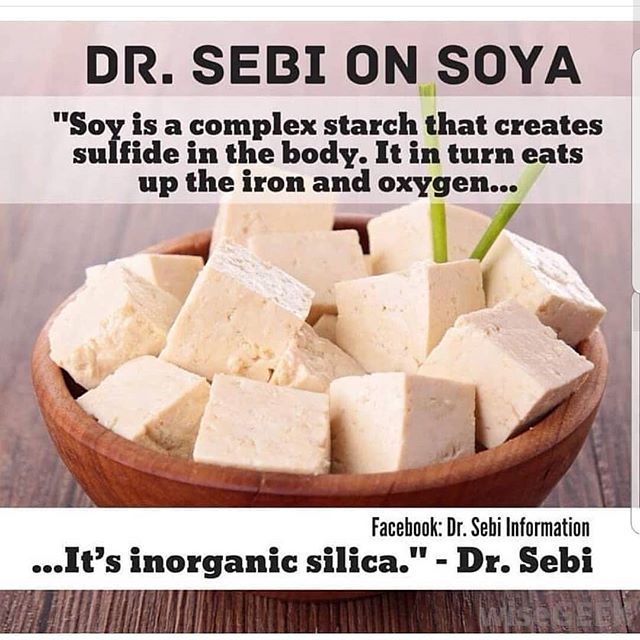
There is no need to follow a special diet while breastfeeding, as long as your diet is balanced. It should include plenty of fruits and vegetables, whole grains such as oats, brown rice, various cereals, and breads labeled "whole grain", "wholemeal" or "wholemeal". These foods, along with potatoes, pasta, and couscous, are high in starch, an important source of energy.
In addition, you need lean proteins found in chicken, eggs, legumes, lentils, fish, and lean beef, as well as healthy fats found in olive oil, nuts, seeds, avocados, and fatty fish such as salmon and mackerel. Oily fish is very good for your health and development of your baby, but you should not eat more than two servings per week (about 140 g), as it may contain harmful impurities. 1
Should I take vitamins while breastfeeding?
The most important is vitamin D. It is essential for healthy bones, yours and your baby's. We get most of this vitamin from the sun. If you live in a region with insufficient solar activity, especially in winter, your body may lack it. In this case, the doctor may advise taking vitamin D supplements. 2
In this case, the doctor may advise taking vitamin D supplements. 2
You also need to get enough calcium, as it is excreted from the body during breastfeeding. 3 Try to eat four servings of foods rich in this mineral a day. These can be dairy products such as milk, yogurt, and cheese, or non-dairy products such as nuts, tofu, sesame seeds, and leafy vegetables. One serving may consist of, for example, half a cup of green vegetables or a small piece of cheese (50 g).
What foods should I avoid while breastfeeding?
The good news is that you can eat almost anything while breastfeeding. Only the consumption of oily fish should be limited. In small quantities, even caffeine is acceptable - more on this below.
If you are not allergic to peanuts, there is no reason to deny yourself products that contain peanuts. Recent studies show that if you eat peanuts while breastfeeding and gradually introduce them into your baby's diet during the first year, your baby will be less likely to become allergic to them in the future. 4
4
Are extra calories needed while breastfeeding?
Breastfeeding mothers need about 500 more calories a day. 5 But every mother is unique and your energy needs will change throughout your breastfeeding period. The number of calories you need depends on your baby's age, appetite, height, and weight, as well as your body mass index (BMI), your activity, and factors such as whether you are exclusively breastfeeding or not, and whether you are breastfeeding twins or multiple babies.
Can I go on a diet while breastfeeding?
Trying to lose weight while breastfeeding is not a good idea because you need to get enough nutrients for you and your baby. The fat accumulated during pregnancy is used to produce milk, so breastfeeding in itself will help you shed those extra pounds.
If your weight changes by more than 1 kg per week, check if you are eating a healthy and balanced diet and adjust if necessary. You can also ask your doctor for advice.
How can I find time to prepare healthy meals?
Having devoted yourself to feeding your child, you can forget about your own nutrition. However, it is important to ensure that your diet does not consist only of sweets and cookies. Of course, sweet snacks are easy and quick, but they do not bring any benefit to your body.
Opt for quick yet nutritious meals like scrambled eggs with spinach or fried chicken with brown rice. Oatmeal is great for breakfast, as it provides a slow release of energy from grains and soluble dietary fiber, which is what you need to restore strength in the morning after a night of breastfeeding.
Store pre-cut fruits and vegetables in the refrigerator for light snacks, or carry unsalted nuts in your bag. It's much easier than peeling tangerines with one hand while holding a baby with the other.
Should I drink more water while breastfeeding?
Breastfeeding can make you thirsty, so it's important to drink enough water. A person needs six to eight glasses of fluid a day, and even more if breastfeeding. 6 Make it a habit to drink a glass of water, milk or fruit juice without sugar every time you feed your baby.
A person needs six to eight glasses of fluid a day, and even more if breastfeeding. 6 Make it a habit to drink a glass of water, milk or fruit juice without sugar every time you feed your baby.
I love coffee. Do I need to quit caffeine?
Coffee, like everything you eat or drink, passes into your breast milk, so it is advisable to limit your intake while breastfeeding. Legal coffee limits vary by country, but the average recommendation is not to exceed 200-300 mg of caffeine per day (300 mg is equivalent to two cups of filtered coffee or four cups of tea). Talk to your doctor about the acceptable amount of coffee consumption for you. Also, don't forget that caffeine is found in cola and energy drinks, and a small bar of dark chocolate can contain up to 50 mg. 7
If I eat a varied diet, will my baby be less fussy about food?
Breast milk has the flavor of everything you eat. 8 Therefore, if you eat a variety of foods while breastfeeding, giving your baby a chance to taste different flavors, he may like them in the future.
If you like spicy and spicy foods, there is no reason to refuse them while breastfeeding. When my first child was born, I ate a lot of spicy food. When my daughter was two years old, we went to Sri Lanka, coincidence or not, but she ate absolutely everything.
Can something in my diet not be suitable for a child?
Babies often suffer from colic or are picky eaters at an early age, so mothers naturally wonder if their diet is causing this. Most likely no. Studies show that the proportion of children who are allergic to any component of breast milk is only slightly more than 1%. 9 Cow's milk, eggs, corn, and soy proteins in moms' diets are much more likely to cause allergic reactions than spicy foods, hot sauces, or cruciferous vegetables, which moms usually worry about.
If your baby is allergic to substances in your milk, it can cause profuse vomiting, rash, bloody stools, or prolonged constipation. If your baby has an intolerance to any food, you will notice symptoms such as moodiness and crying after feeding, burping, diarrhea, or the baby will press his knees to his chest. Contact your doctor if something is bothering you. He may suggest eliminating certain foods for a couple of weeks, and then see if the child's behavior changes after eating them again.
Contact your doctor if something is bothering you. He may suggest eliminating certain foods for a couple of weeks, and then see if the child's behavior changes after eating them again.
You can also keep a food diary: write down everything you eat and drink, as well as your child's symptoms, and you may notice some patterns. However, before cutting out any foods, such as dairy, always check with your doctor, as it's important to know that you're getting the nutrients you need from other sources. Depending on where you live, you will be referred to a nutritionist or other specialist.
Does a vegetarian diet affect breast milk?
If you are getting enough calories and all the nutrients your body needs (carbohydrates, proteins, fats, vitamins and minerals), then you have nothing to worry about. A vegetarian or vegan diet requires plenty of vitamin B12, vitamin D, calcium, and omega-3 fatty acids while breastfeeding, so opt for foods and supplements that provide you with these essential nutrients.
If you are on a vegetarian, vegan, macrobiotic, or other special diet, you may need additional medical advice to make sure you are getting all the nutrients your baby needs.
Literature
1 National Health Service (NHS) [Internet]. Burnley, UK: Department of Health; 2018. Should pregnant and breastfeeding women avoid some types of fish?; 2015 Jul 06 [cited 2018 Apr 12]; Available from: https://www.nhs.uk/chq/Pages/should-pregnant-and-breastfeeding-women-avoid-some-types-of-fish.aspx - National Health Service (NHS) [Internet]. Burnley, UK: Department of Health; 2018. "Should a pregnant and lactating woman refrain from eating certain types of fish?"; July 6, 2015 [cited April 12, 2018]; See article on site https://www.nhs.uk/chq/Pages/should-pregnant-and-breastfeeding-women-avoid-some-types-of-fish.aspx
2 Oberhelman SS et al. Maternal vitamin D supplementation to improve the vitamin D status of breast-fed infants: a randomized controlled trial. Mayo Clin Proc. 2013;88(12):1378–1387. - Oberhelman S.S. et al., Introduction of Vitamin D to the Diet of Nursing Mothers to Increase Vitamin D in children: a randomized controlled trial. Mayo Klin Prok. 2013;88(12):1378–1387. : effects on the mother and the fetus. Am J Obstet Gynecol. 2006;194(4):937-945. - Thomas M., Weisman S.M., "Calcium intake during pregnancy and lactation: effects on the mother and on the fetus". Am J Obstet Ginekol (American Journal of Obstetrics and Gynecology). 2006;194(4):937-945.
Mayo Clin Proc. 2013;88(12):1378–1387. - Oberhelman S.S. et al., Introduction of Vitamin D to the Diet of Nursing Mothers to Increase Vitamin D in children: a randomized controlled trial. Mayo Klin Prok. 2013;88(12):1378–1387. : effects on the mother and the fetus. Am J Obstet Gynecol. 2006;194(4):937-945. - Thomas M., Weisman S.M., "Calcium intake during pregnancy and lactation: effects on the mother and on the fetus". Am J Obstet Ginekol (American Journal of Obstetrics and Gynecology). 2006;194(4):937-945.
4 Pitt et al . Reduced risk of peanut sensitization following exposure through breast-feeding and early peanut introduction. J Allergy Clinic Immunol. 2018;141(2):620-625. e 1 - Pitt et al., "Reducing the Risk of Peanut Allergy by Introducing Peanuts into the Breastfeeding Mother's Diet and as a Baby's First Food. " F Allergy Clean Immunol. 2018;141(2):620-625.e1
" F Allergy Clean Immunol. 2018;141(2):620-625.e1
5 Dewey KG. Energy and protein requirements during lactation. Annu Rev Nutr. 1997 Jul;17(1):19-36. - Dewey K. J., "Energy and Protein Requirements During Lactation". Anna Rev Nutr . 1997 Jul;17(1):19-36.
6 Food Standards Agency (FSA) [Internet]. London, UK: Crown copyright 2002. Eating for breastfeeding; [cited 2018 Apr 13]; Available from: https://www.food.gov.uk - Food Standards Agency (FSA) [Internet]. London, UK: State copyright 2002. "Eat to feed" [cited April 13, 2018]. See article on https://www.food.gov.uk
7 National Health Service (NHS) [Internet]. Burnley, UK: Department of Health; 2018. Breastfeeding and diet; 2016 Jan 29 [cited 2018 Apr 12]; Available from: https://www.nhs.uk/conditions/pregnancy-and-baby/breastfeeding-diet - National Health Service (NHS) [Internet].



